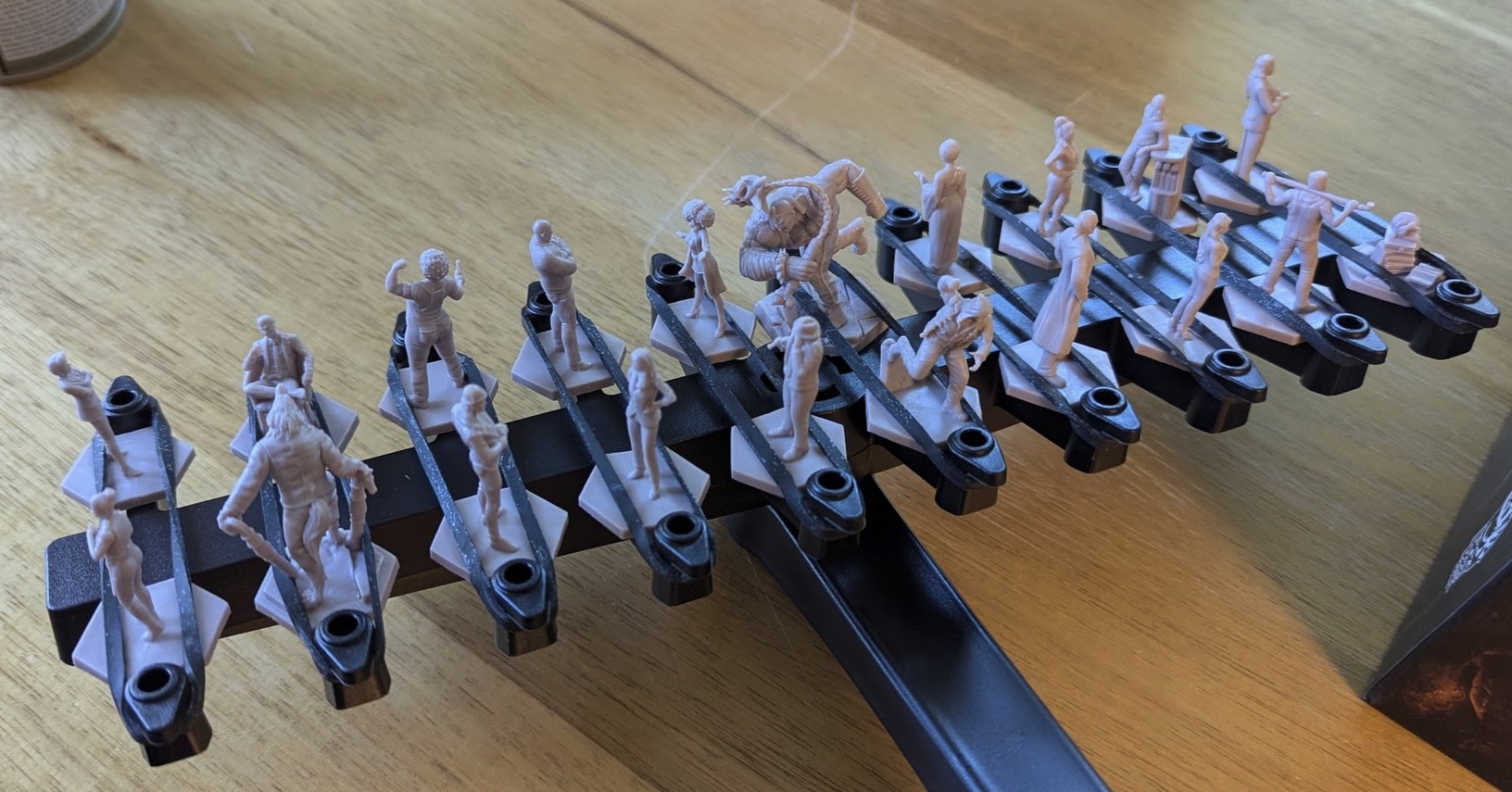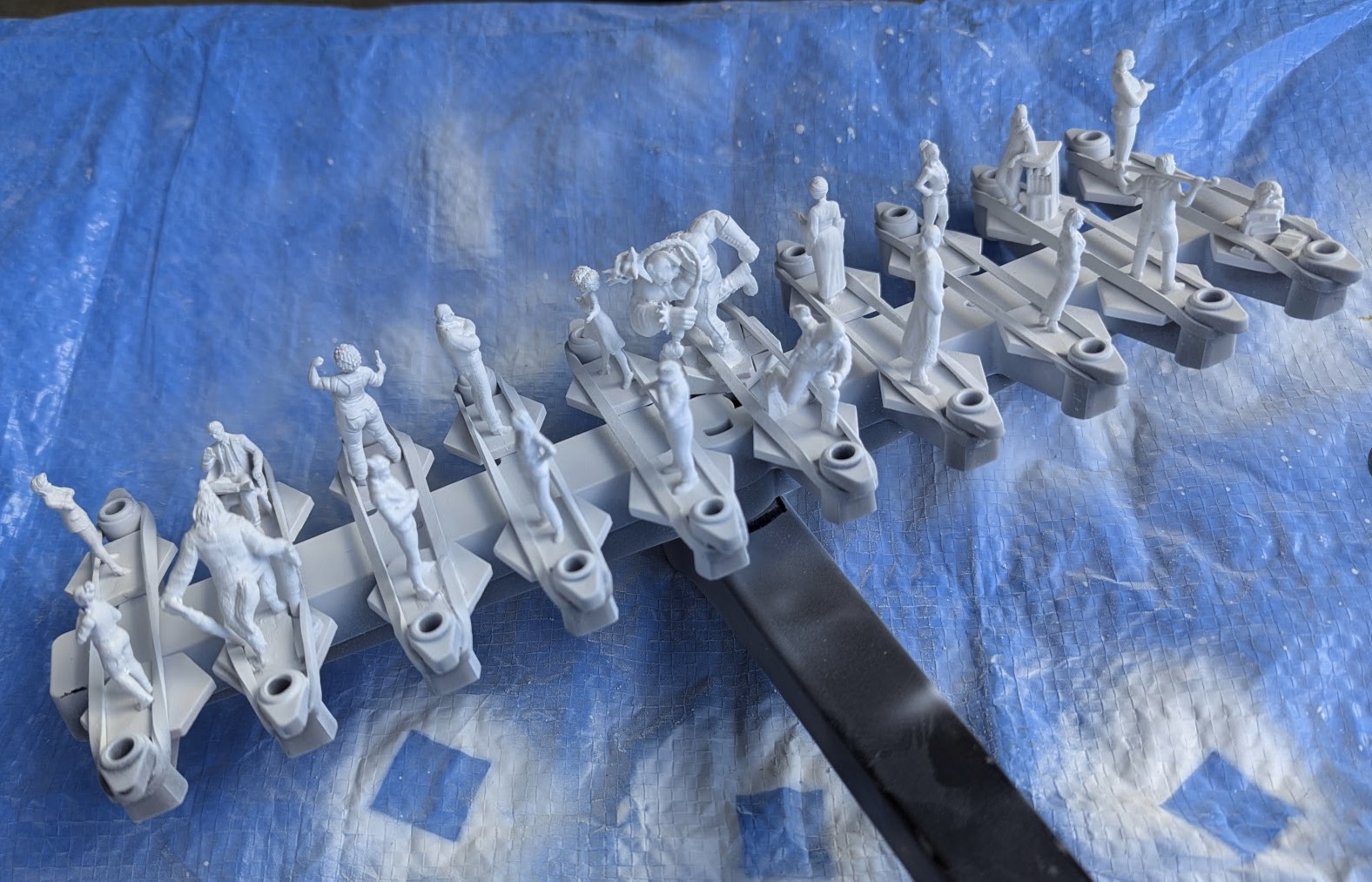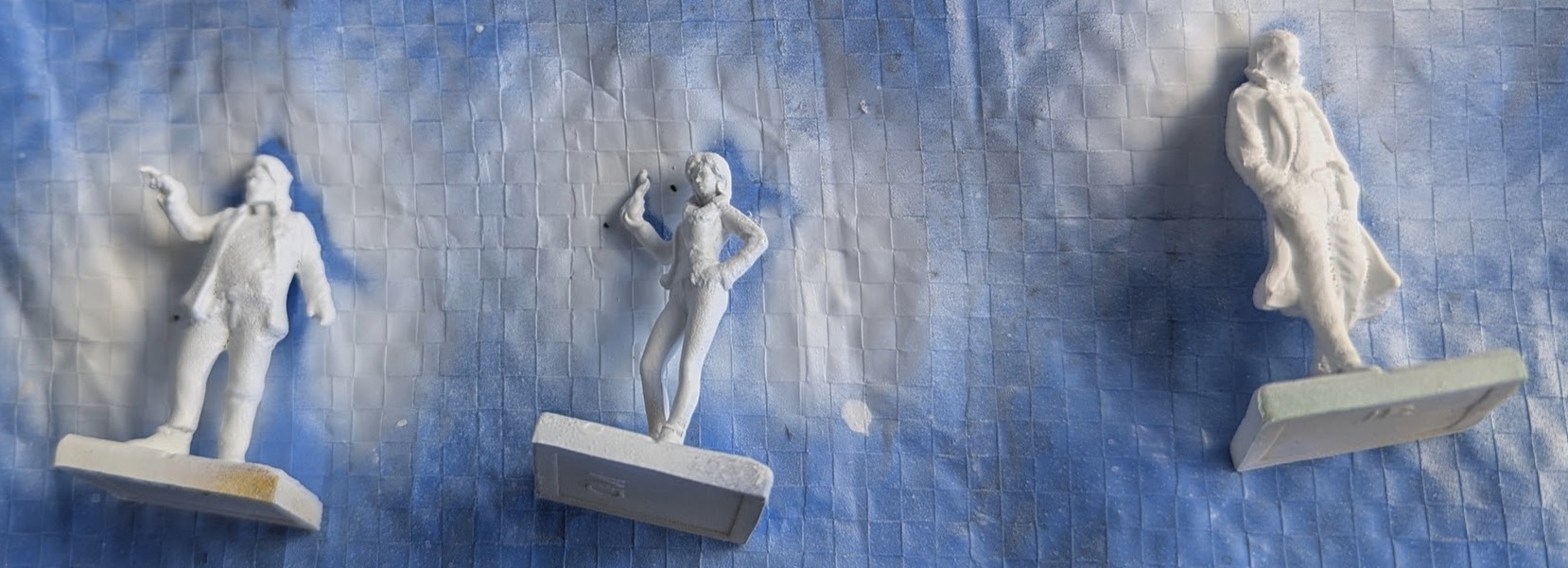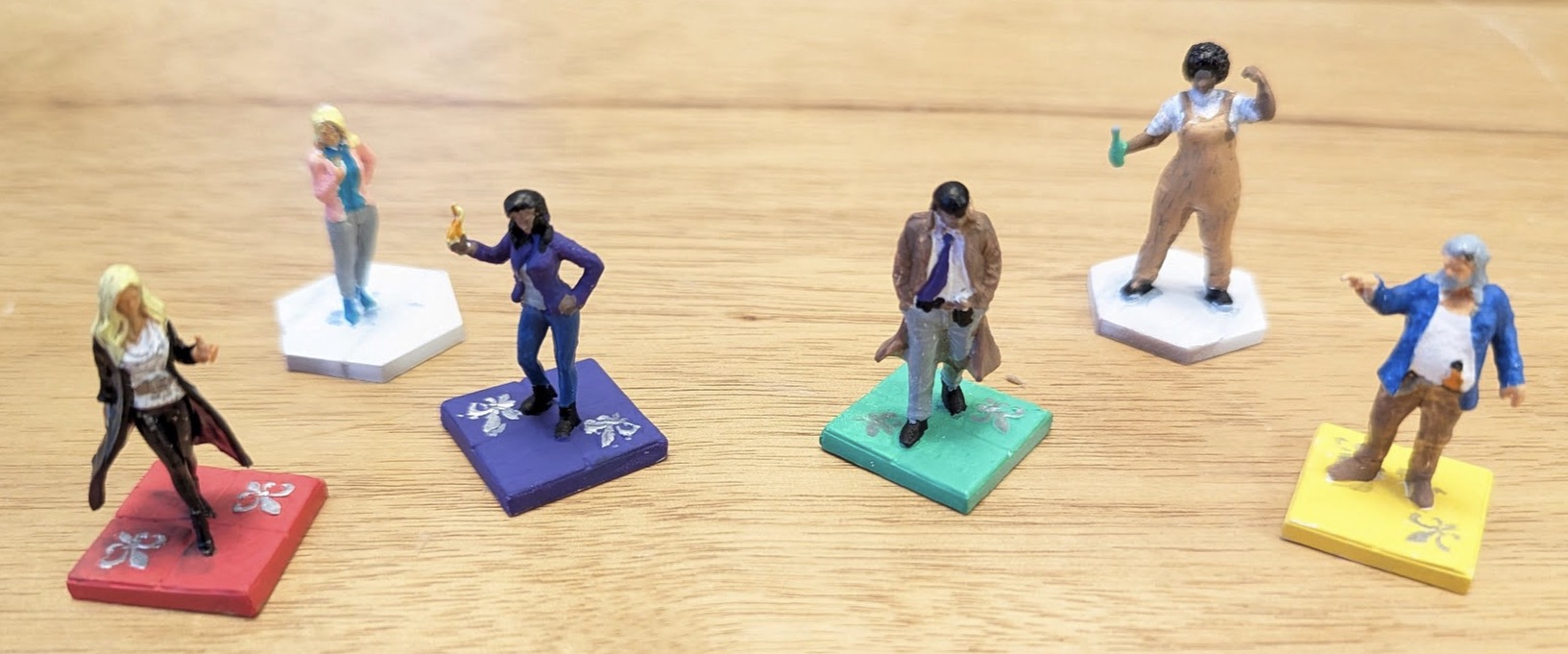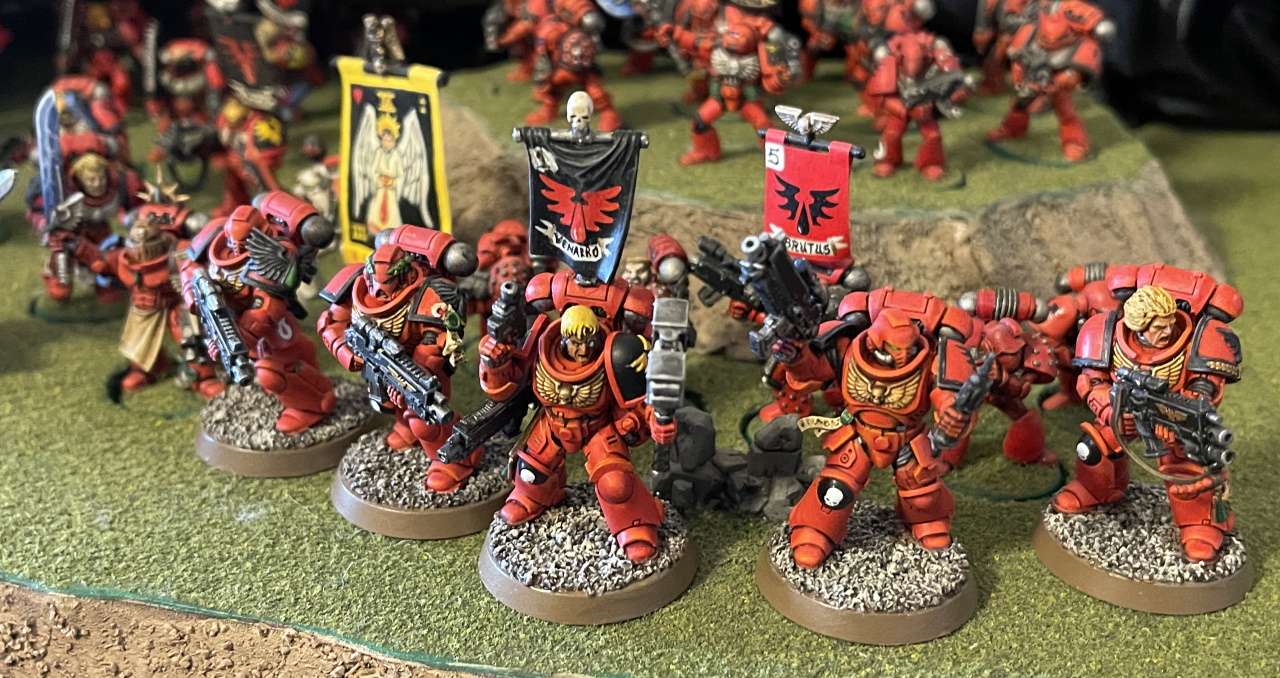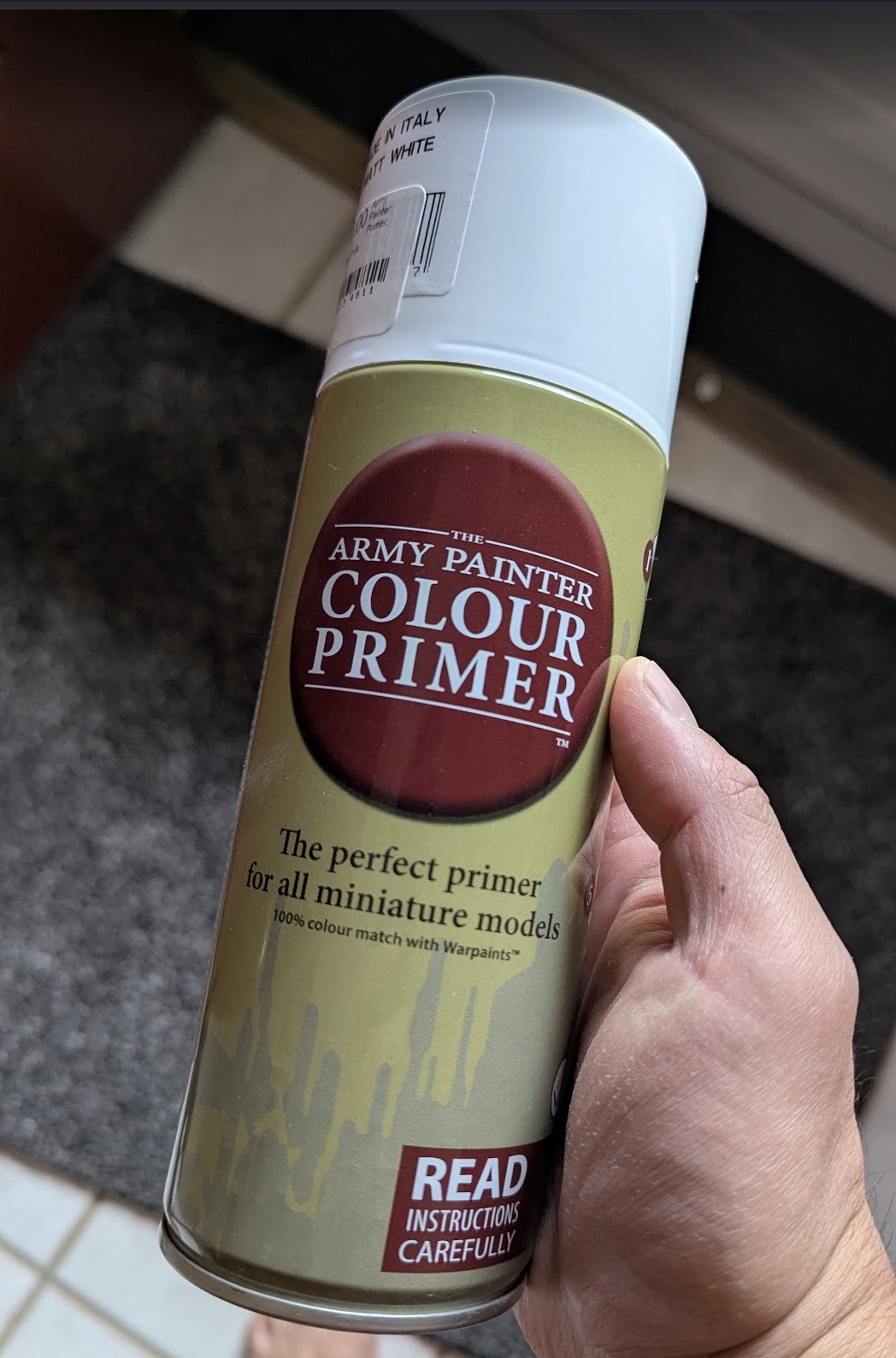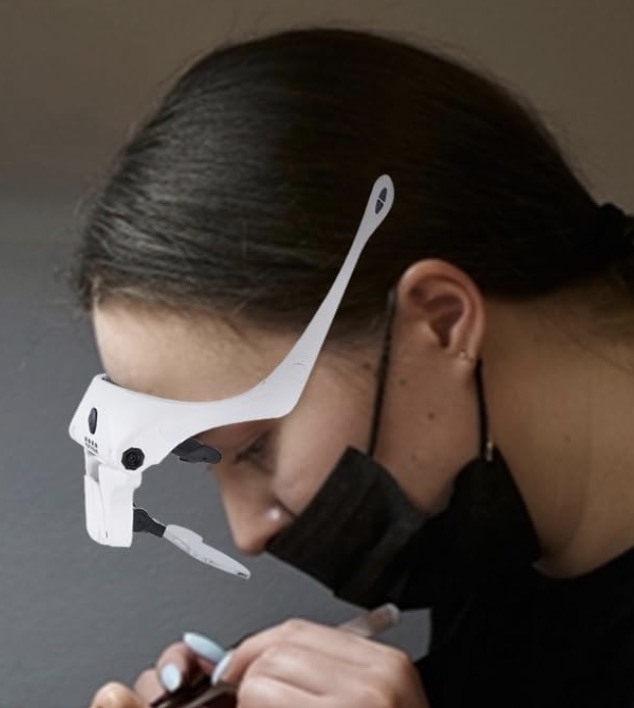I recently Kickstarted a detective-noir board game set in New Orleans (The Dark Quarter — a fun and well-written co-op mystery game!), which came with several dozen gray plastic miniatures.
The figurines are hard to differentiate at a glance, mostly being gray humanoids standing in generic poses, like this:
I’d like to paint them to better aid in visual differentiation, but… I’m really, really, really lazy. The old primer + multiple layers of brushwork + weathering + varnishing techniques that I see on YouTube seem to take hours, if not days, per figurine. They come out beautiful, of course, but I don’t need something quite that beautiful or time-consuming. Ideally I’d like to spend no more than a few minutes per figure.
Are there easier techniques and tools these days? Seems like there’s some companies now making acrylic markers that can paint directly onto the plastic, no primer needed, like AK’s Real Colors Markers: https://ak-interactive.com/product/special-box-rc-markers-34-units/
That’s much much approachable than having to use standard paints and brushes and palettes and all that. But those are very expensive.
In a pinch, I tried out the Sharpie Creative Markers, which are cheap acrylic markers. Some of the colors actually paint very well onto the plastic directly, while others just drip off and require multiple coats for a still-flawed finish.
I wonder if just doing a quick primer layer would make them more paintable, or if the AK markers are truly that much better (in terms of chemically being able to adhere to raw plastic better).
Or, any other suggestions for quick-and-dirty paint jobs? They don’t have to come out as masterpieces, just individually recognizable (like in the official paint guide).
It’s my first time ever painting miniatures of any sort, so it’s not a high bar I’m setting for myself ![]() Just about anything would be better than the gray blobs.
Just about anything would be better than the gray blobs.


